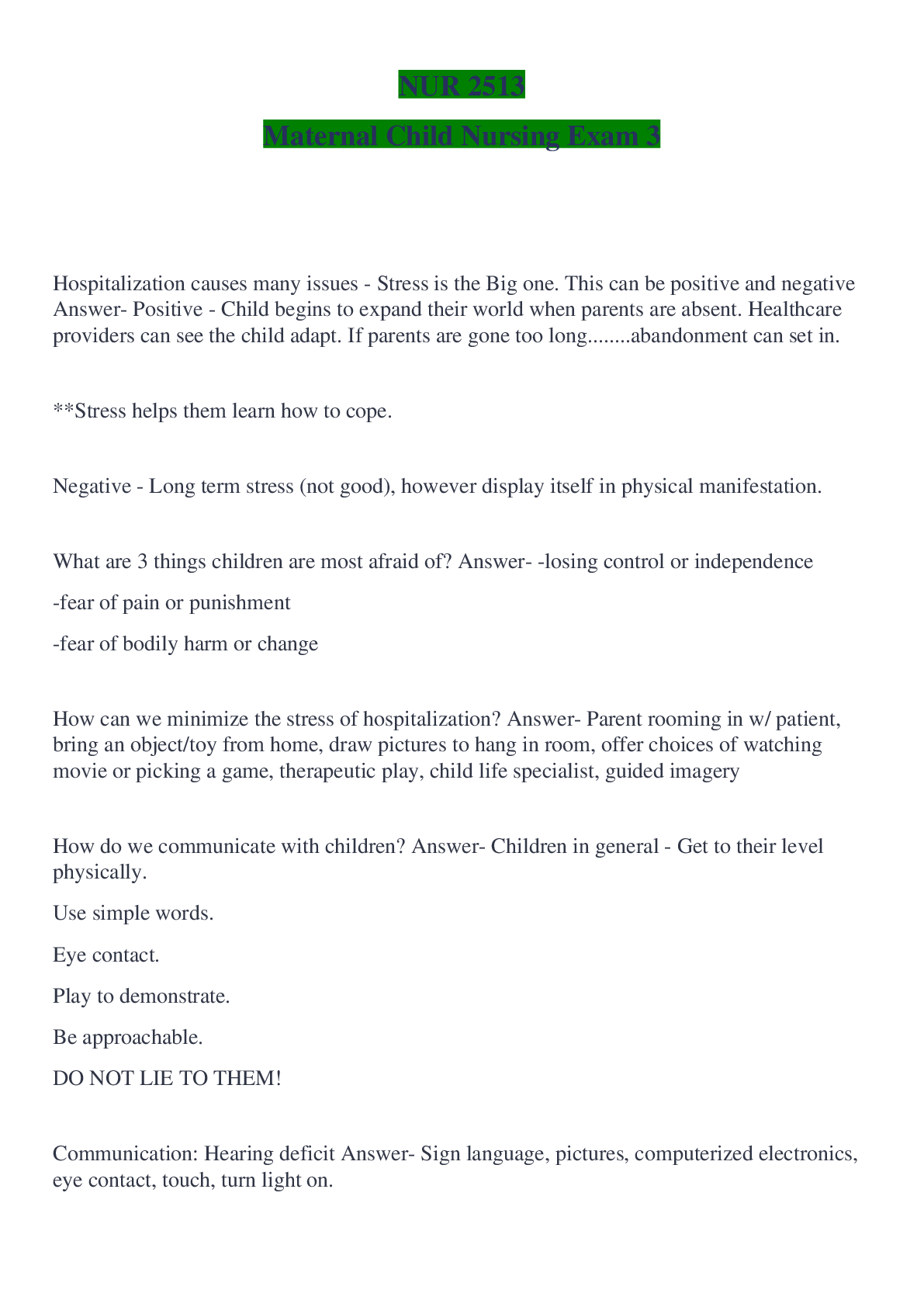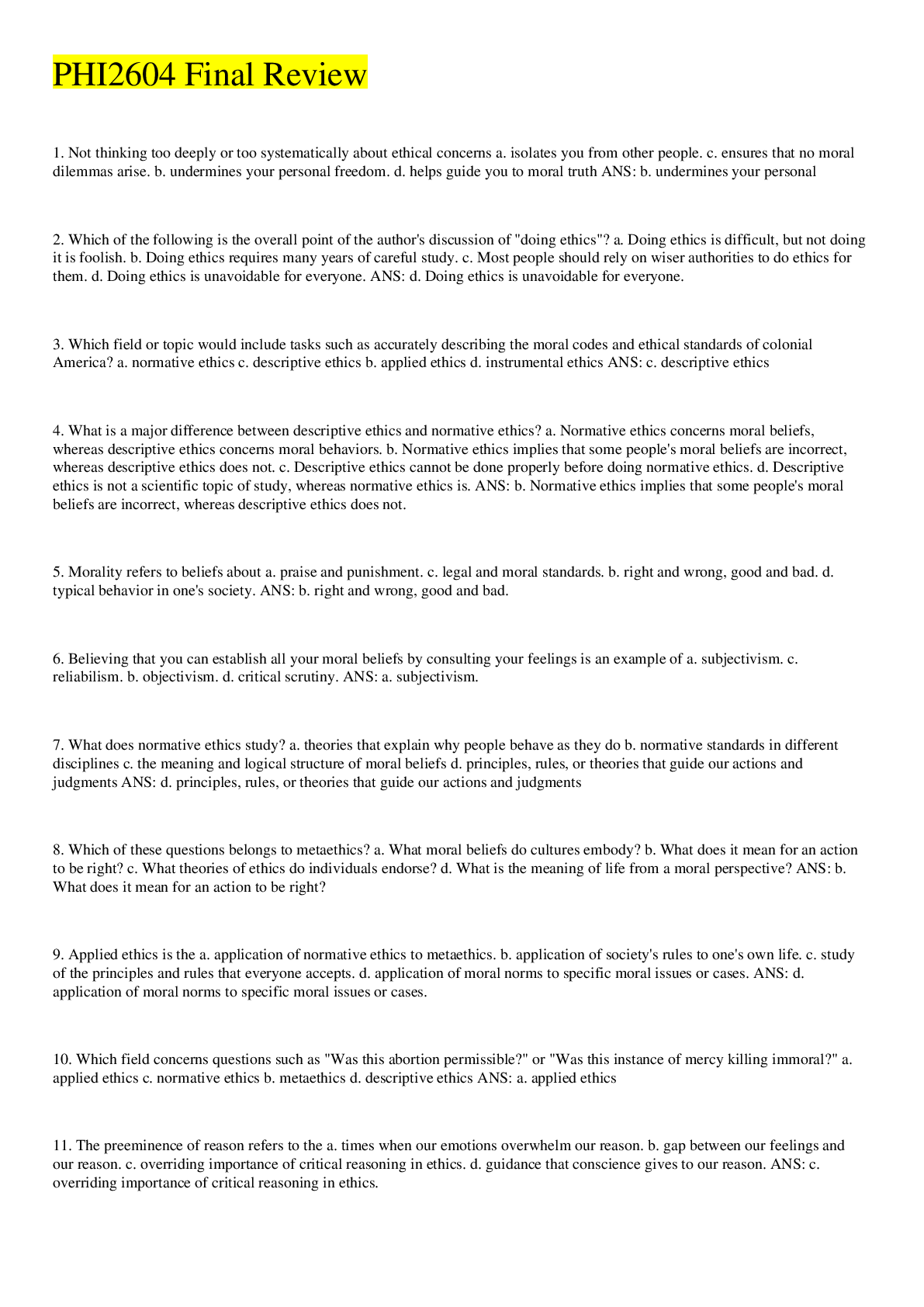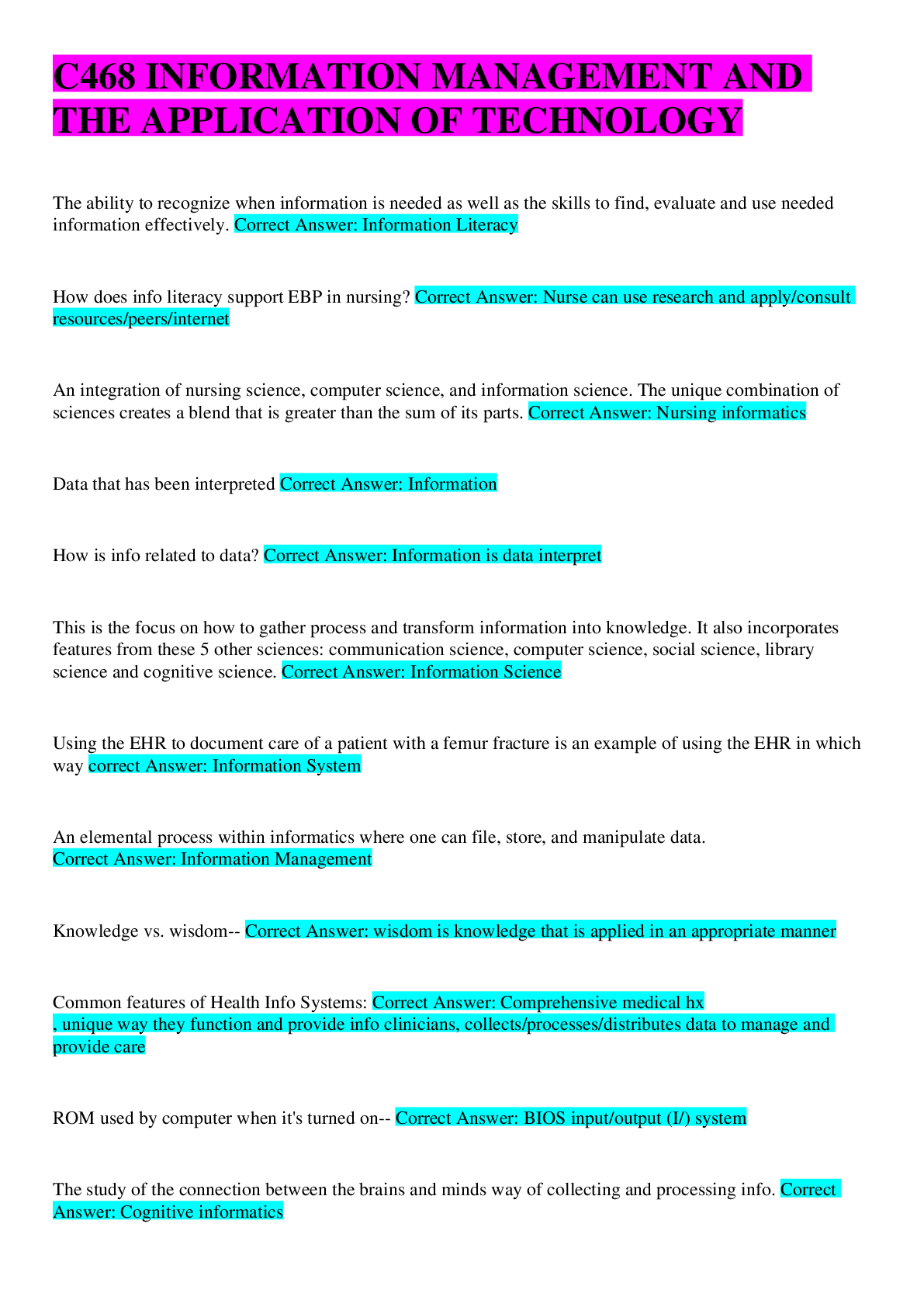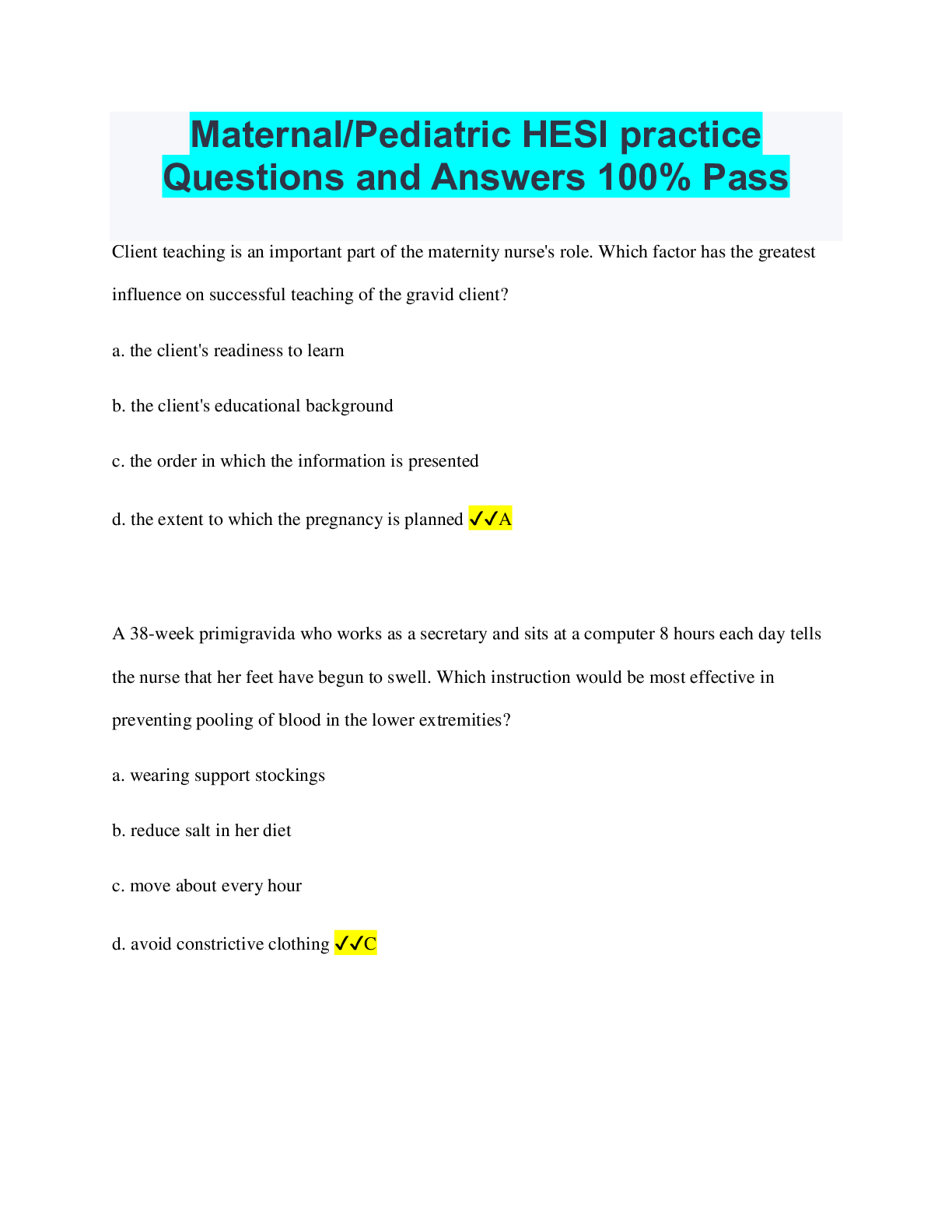Biology > STUDY GUIDE > NUR 2513 Maternal Child Nursing Exam 3 (All)
NUR 2513 Maternal Child Nursing Exam 3
Document Content and Description Below
Hospitalization causes many issues - Stress is the Big one. This can be positive and negative Answer- Positive - Child begins to expand their world when parents are absent. Healthcare providers can se... e the child adapt. If parents are gone too long........abandonment can set in. **Stress helps them learn how to cope. Negative - Long term stress (not good), however display itself in physical manifestation. What are 3 things children are most afraid of? Answer- -losing control or independence -fear of pain or punishment -fear of bodily harm or change How can we minimize the stress of hospitalization? Answer- Parent rooming in w/ patient, bring an object/toy from home, draw pictures to hang in room, offer choices of watching movie or picking a game, therapeutic play, child life specialist, guided imagery How do we communicate with children? Answer- Children in general - Get to their level physically. Use simple words. Eye contact. Play to demonstrate. Be approachable. DO NOT LIE TO THEM! Communication: Hearing deficit Answer- Sign language, pictures, computerized electronics, eye contact, touch, turn light on. Gain their attention before speaking, face child when speaking, speak slowly and loudly. Communication:Visual deficit Answer- Announce yourself, let them know that you are there. Keep routine in the room the same. Make sure they have their glasses on. Bright lights. Communication: Cognitive issues Answer- Be gentle and kind, very short directives. Praise. Hold boundaries. Separation comfort care Answer- -with favorite items or activity, distraction, parents room in or go with child to procedures. -Child will protest separation due to anxiety, [prep with tours and explanation, use transitional objects] reinforce when they will see parent again. -Despair follows due to grief of separation, detachment due to ongoing anger/coping skills. Alleviate stress and fears: Answer- -explain procedure -distraction -ask parent to stay and participate in care -explain what's going on What is the benefit of play? Answer- ● Allows children to express feelings and fears. ● Facilitates mastery of developmental stages and assists in the development of problem solving abilities. ● Allows children to learn socially acceptable behaviors. ● Activities should be specific to each child's stage of development. ● Can be used to teach children. ● A means of protection from everyday stressors. Solitary play Answer- The child plays alone, without regard for those around him. Characteristic of infants. Onlooker play Answer- The child observes the other children around him as he plays alone; may alter own play activities based on what he sees the others doing or may be content to continue in his play while simply talking with the other children; play activities are different (e.g., one child may be bouncing a ball while another is playing with jacks). Characteristic of toddlers. **RED FLAG for continuing in this phase of play, which is usually indicative of autism Parallel play Answer- Children play independently among other children but they do not yet play together, which is characteristic of toddlers. Associative play Answer- Children playing together without organization, which is characteristic of preschoolers Cooperative play Answer- Organized playing in groups. Children assume designated roles in the games, have goals for the games, and rely on one another for the game to continue and progress. This is characteristic of school-age children and adolescents. Nutrition is: Answer- the single most important factor in the growth and development of children. Are food fads that different children encounter harmful? Answer- -No, and are usually self-limiting. -Adolescents have many different needs for greater caloric intake and more concentrated iron, folic acid, and protein. Toddlers: At risk for? Answer- Physiological anemia -Because of too much calcium in milk impedes iron absorption Physiological anorexia -Toddlers begin developing taste preferences and are generally picky eaters who repeatedly request their favorite foods. Physiologic anorexia occurs, resulting in toddlers becoming fussy eaters because of a decreased appetite. Risks with inadequate nutrition: Answer- • Cardiac and organic failure, electrolytic imbalance, cardiac dysrhythmia, tooth enamel erosion, esophageal damage. Kids are obsessive picky eaters. • Older kids become obsessive and restrictive. • Over-eaters think about meals before all else. • In little kids they can become constipated, unhealthy. • Anemia can be an issue. Food fads are not uncommon and if the child has a daily food intake that is overall balanced, the parent should be comforted and instructed to continue to track the intake. [Show More]
Last updated: 2 years ago
Preview 1 out of 39 pages

Buy this document to get the full access instantly
Instant Download Access after purchase
Buy NowInstant download
We Accept:

Reviews( 0 )
$13.00
Can't find what you want? Try our AI powered Search
Document information
Connected school, study & course
About the document
Uploaded On
May 11, 2022
Number of pages
39
Written in
Additional information
This document has been written for:
Uploaded
May 11, 2022
Downloads
0
Views
77


















, Latest Questions and Answers with Explanations, All Correct Study Guide, Download to Score A.png)







